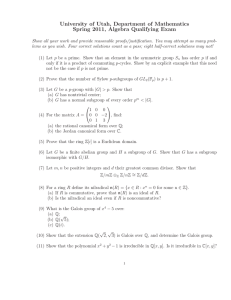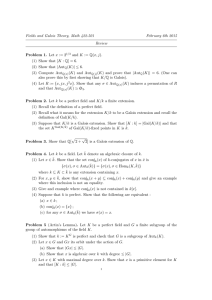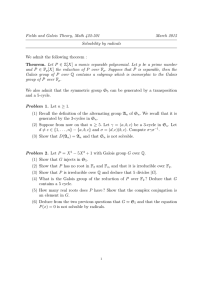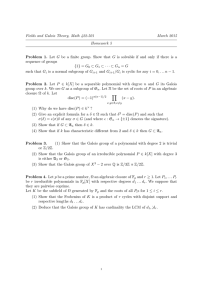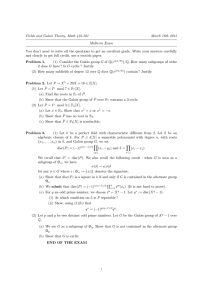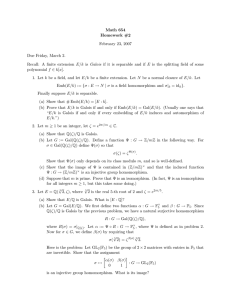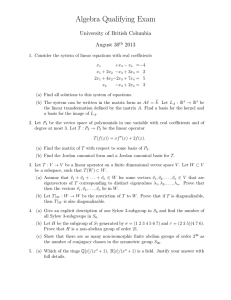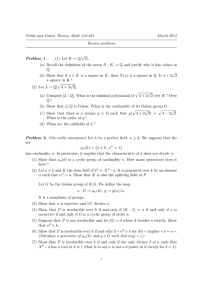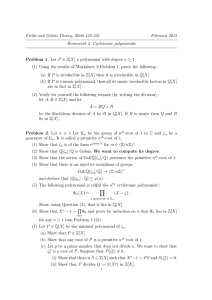Fields and Galois Theory, Math 422-501 February 11th 2015 Midterm Exam
advertisement
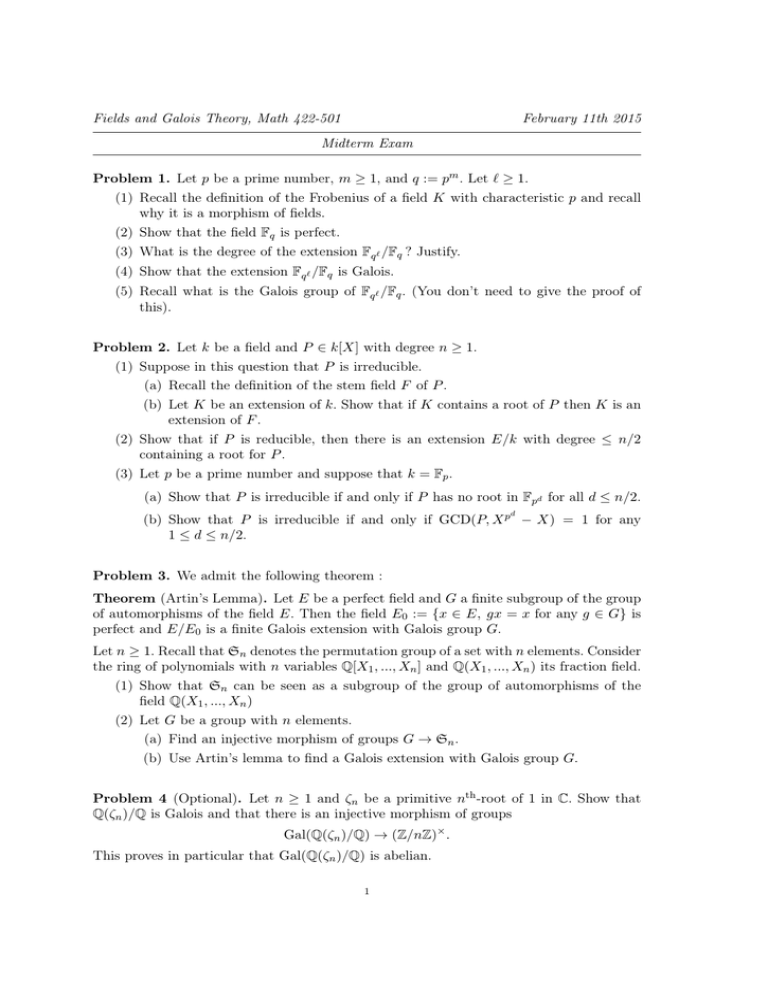
Fields and Galois Theory, Math 422-501
February 11th 2015
Midterm Exam
Problem 1. Let p be a prime number, m ≥ 1, and q := pm . Let ` ≥ 1.
(1) Recall the definition of the Frobenius of a field K with characteristic p and recall
why it is a morphism of fields.
(2) Show that the field Fq is perfect.
(3) What is the degree of the extension Fq` /Fq ? Justify.
(4) Show that the extension Fq` /Fq is Galois.
(5) Recall what is the Galois group of Fq` /Fq . (You don’t need to give the proof of
this).
Problem 2. Let k be a field and P ∈ k[X] with degree n ≥ 1.
(1) Suppose in this question that P is irreducible.
(a) Recall the definition of the stem field F of P .
(b) Let K be an extension of k. Show that if K contains a root of P then K is an
extension of F .
(2) Show that if P is reducible, then there is an extension E/k with degree ≤ n/2
containing a root for P .
(3) Let p be a prime number and suppose that k = Fp .
(a) Show that P is irreducible if and only if P has no root in Fpd for all d ≤ n/2.
d
(b) Show that P is irreducible if and only if GCD(P, X p − X) = 1 for any
1 ≤ d ≤ n/2.
Problem 3. We admit the following theorem :
Theorem (Artin’s Lemma). Let E be a perfect field and G a finite subgroup of the group
of automorphisms of the field E. Then the field E0 := {x ∈ E, gx = x for any g ∈ G} is
perfect and E/E0 is a finite Galois extension with Galois group G.
Let n ≥ 1. Recall that Sn denotes the permutation group of a set with n elements. Consider
the ring of polynomials with n variables Q[X1 , ..., Xn ] and Q(X1 , ..., Xn ) its fraction field.
(1) Show that Sn can be seen as a subgroup of the group of automorphisms of the
field Q(X1 , ..., Xn )
(2) Let G be a group with n elements.
(a) Find an injective morphism of groups G → Sn .
(b) Use Artin’s lemma to find a Galois extension with Galois group G.
Problem 4 (Optional). Let n ≥ 1 and ζn be a primitive nth -root of 1 in C. Show that
Q(ζn )/Q is Galois and that there is an injective morphism of groups
Gal(Q(ζn )/Q) → (Z/nZ)× .
This proves in particular that Gal(Q(ζn )/Q) is abelian.
1
